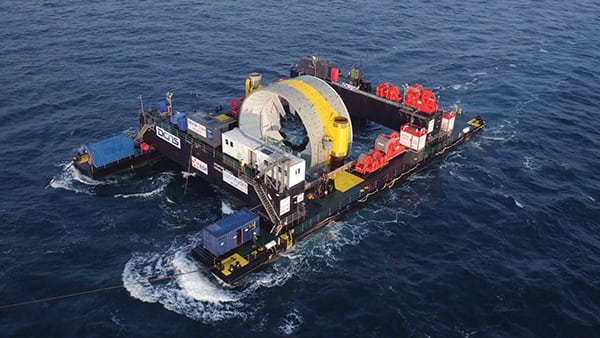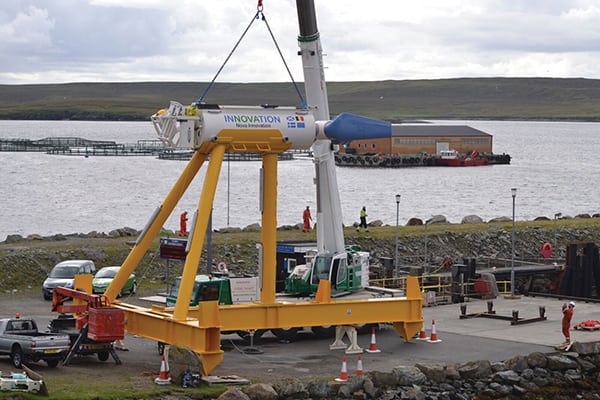First Scottish Tidal Energy Array Is Connected to the Grid
One of the world’s first offshore tidal energy arrays was connected to Scotland’s grid this August. On its heels is the grid connection of a second array that is owned by a different company.
Nova Innovation, a Scottish tidal energy company founded in 2010, on August 28 grid-connected the second of three 100-kW Nova M100 turbines that are planned for deployment in Bluemull Sound. The sound sits between the islands of Unst and Yell in the north of Shetland, where the North Sea meets the Atlantic.
The M100 tidal turbine (Figure 2) developed by the Shetland Tidal Array—a joint enterprise between Nova Innovation and Belgian renewables firm ELSA—builds on the successful design, manufacture, and deployment of a community-funded 30-kW device. “Although the device is three times more powerful than the Nova 30 it is only twice the cost,” Nova Innovation says on its website.
In the race to grid connect the world’s first fully operational array of tidal turbines, Nova Innovation surged ahead of OpenHydro, a company owned by French industrial group DCNS. That company deployed a second turbine at French utility EDF’s Paimpol-Bréhat tidal project in North Brittany in May (Figure 3), indicating that the array would be connected to a submarine converter developed by General Electric to export 1 MW to the French grid this past summer (see “First Turbine Deployed at French Tidal Power Farm” in the April 2016 issue).
 |
|
3. Going with the flow. DCNS subsidiary OpenHydro successfully deployed its second turbine at EDF’s Paimpol-Bréhat tidal array, saying it will complete grid-connection this summer. Courtesy: DCNS |
OpenHydro is now looking ahead at setting up a 14-MW array for EDF Energies Nouvelles’ Normandie Hydro project by 2018, announcing in May that it will build a turbine facility in Cherbourg to act as an industrial hub for that project. The facility has yet to be finalized by the French government, however.
—Sonal Patel, associate editor
